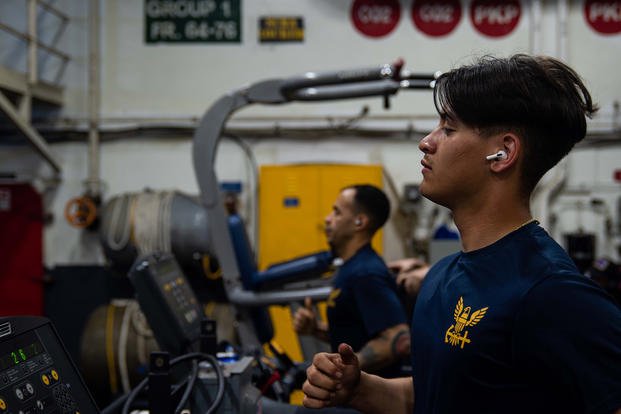Transitioning from running on a treadmill indoors to going outdoors again has several challenges that runners should consider when hitting the pavement for the first time in a long time. Whether it is the seasonal weather, air quality, personal safety you are trying to work around or just personal preference, there is a difference between treadmill and road running.
Here is a question from a winter treadmill runner starting to make the transition back to the outdoors as the weather is breaking in his area:
Stew, I'm back to running outside after two months of indoor running on a treadmill. I was on the treadmill, hiding from the cold. My calves are sore after my first few days of outdoor running, but I'm not tired. Any advice on things I would look to do when making this transition? Thanks, Alex
Prepare for temperature changes: When on a treadmill, you are likely running in a climate-controlled area where the air is in the low 70-degree range. Going outside, even as the weather breaks to just above freezing (or summer heat), the differences can be noticeable -- 20-30 degrees in either direction. That is significant and will require additional clothing layers when colder than normal or much less in the summer.
Bring gear, ID and water: When running on the sidewalks, local trails or a high school track, bring extra items. You may need water, a stopwatch, some cash and identification, or other items that were not necessary to carry while running on a treadmill.
Running is different (treadmill vs. road): When you run on a treadmill, your legs can move faster than normal as the tread aids the running stride. The road runner will require more effort to propel himself forward. This is likely the reason why your calves are sore. Or you could be on uneven running surfaces and experiencing more hills or stairs along the trail than inclines on a treadmill. This will strain the calves, hamstrings, thighs and hips more.
The impact is different, too: The impact forces produced on the treadmill are much less than those produced when running on pavement or concrete. Consider transitioning to a rubberized track, turf field or grass before hitting the road. This, too, will make the feet and calves sorer than normal if you go from the treadmill to concrete too fast.
Running conditioning: Because you are not moving your legs as fast on land, you may not experience higher heart rates than on the treadmill. Mix in a faster pace or sprinting intervals on land, and you may find similar heart rates to those you achieved on the treadmill.
Every other day: For your first few weeks, consider running on the road every other day. Maybe mix in some nonimpact cardio or go back to the treadmill on the days in-between to make the transition from treadmill to road running less abrupt.
The best advice is to start off slowly and progressively build up your pace as you get your lower extremities used to the increased impact forces of the transition. Ensure you get a good warm-up with jogging or biking, plus dynamic stretches. If your calves are tight during the run, stop and do a light stretch to assist. Once you get rid of the tightness, you might increase your pace and feel like you are working again.
Stew Smith is a former Navy SEAL and fitness author certified as a Strength and Conditioning Specialist (CSCS) with the National Strength and Conditioning Association. Visit his Fitness eBook store if you're looking to start a workout program to create a healthy lifestyle. Send your fitness questions to stew@stewsmith.com.
Want to Learn More About Military Life?
Whether you're thinking of joining the military, looking for fitness and basic training tips, or keeping up with military life and benefits, Military.com has you covered. Subscribe to Military.com to have military news, updates and resources delivered directly to your inbox.


















